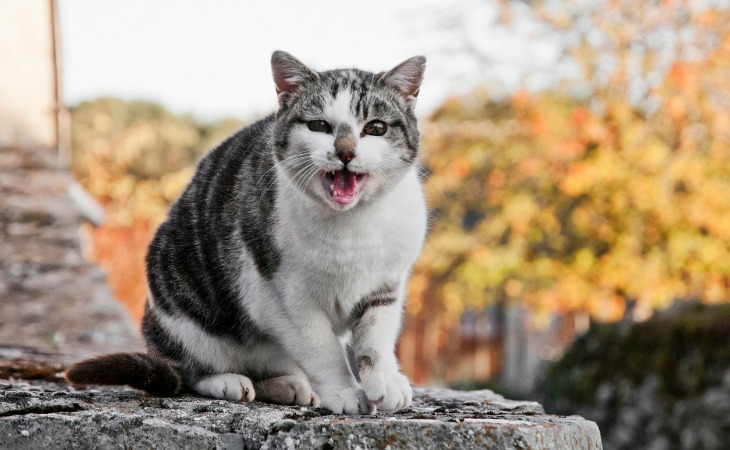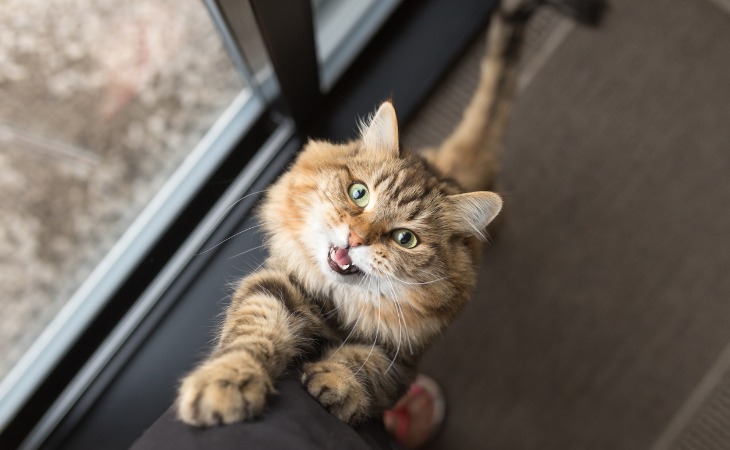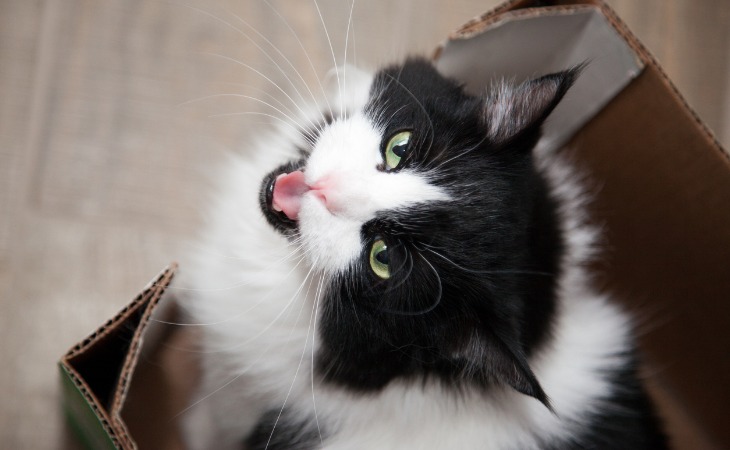Meows are complex sounds that cats make on a daily basis. As a cat owner, it is important to be able to decode these various sounds. So, what do these noises that are characteristic of domestic felines mean? How can you recognize your cat’s meowing?
The different types of cat meows and their meaning
Cats often meow to communicate with humans. Sometimes they meow to communicate with each other. For example, a female cat may meow to let other cats know that she is in heat. The meowing of a small cat signals to its mother that it is hungry, scared or cold.
Therefore, this sound does not have a unique or standardized meaning. It is mainly the context of a meow and the actions that accompany it that make it possible to decipher it. Rhythm, tone and intensity are also important clues.
Below, we have listed for you the different types of vocalizations that are most common in cats.
A soft meow
This type of meow is characterized by a relatively high-pitched but calm sound. Cats makes this sound to show you their satisfaction or their well-being. The softness and calmness in a cat’s meow can also be synonymous with a request for a caress.
A meow accompanied with a purr
When a cat is meowing and purring at the same time, it usually means that it needs affection or that it wants something. Indoor cats can also make this sound when they have prey in their sights or when they are excited. Either way, you don’t have to worry too much.
A long and deep meow
Cats produces a long, often insistent meow to express an urgent need. This meow can mean that it is hungry or that it wants to go outside. It indicates a request or a complaint. Use the actions that accompany this sound to quickly understand what your feline wants.
A short meow
A short meow can be a way for him or her to welcome you or greet you. Cats often meow like this when they haven’t seen you for a long time.
A jerky meow
Sometimes your cat may be stressed. For example, if cats notice the presence of a stranger or if they notice a change in their environment (a change that affects his or her habits), they will produce a persistent, jerky meow to express it. They might accompany this sound with a clattering of teeth and a nervous swaying of the tail. The same gesture can be made when faced with the prospect of mating (this is only valid for males).
A serious and intense meow
Even though cats love to play, their mood can change very quickly. To express this, they make a deep and intense sound. This type of meowing may be due to feelings of anger or fear. If your cat suddenly starts meowing like this while you are stroking her, it means that something is bothering her. It’s up to you to identify the cause of the discomfort and make it go away.
Mating meows
When they are in heat, cats emit a bisyllabic sound that is very close to a baby’s crying. It’s the meowing of love. Males respond to this type of meowing with intense and continuous sounds.
Widely spaced meows
If a cat’s meows are widely spaced, this is usually not a good sign. Felines often behave this way when they are uncomfortable. In a way, it’s a cry for help.
Prolonged isolation can also be at the root of this type of meowing.

Other types of cat sounds and their meaning
Apart from the meows that we have learned to recognize, cats also make other noises that we need to know about in order to understand them better. For example, there is purring, whistling, chirping, screaming and cackling.
Purring
Purring is a continuous, low pitched sound that your cat makes while having a closed mouth. It is a sound that cats make to show that they are happy, relaxed or, on the contrary, upset, unhappy and embarrassed. Purring should be interpreted according to the situation.
You’ll often hear your cat purring when you pet it, when it’s with other cats, or when it’s playing on a blanket. Purring is also used by felines when they find themselves in difficult situations. For example, your cat may purr if he or she realizes you are taking him to the vet. The same is true when an illness disturbs cats, when they are in pain and when they give birth.
Sometimes this can also be interpreted as a request for support or for compassion.
Whistling
In the first weeks after the birth of a kitten, it learns to whistle. Cats make this sound when they are in danger. This allows them to keep the intruder away or threaten him.
Chirping
Chirping is characterized by a soft, rising tones, emitted over a short period of time. This sound allows cats to communicate with each other (cats and their kittens, especially when nursing) or to greet people they particularly like.
Screaming
These are powerful cries from a threatened cat or one that is trying to avoid a fight with another cat. These high-pitched vocalizations have a threatening tone and are prolonged. Felines also scream when they are injured. In this case, the cry is high-pitched, sudden and very loud.
Cackling
Cats make this sound when they are unable to reach prey. For example, when a feline observes a bird through a window and an obstacle prevents him from capturing it, he cackles. However, this short, high-pitched sound, which is accompanied by a nervous movement of the cat’s jaw, is difficult to interpret accurately. For some specialists, it reflects a feeling of excitement combined with frustration.

What can be done to relieve a cat who meows abnormally?
Cats play a lot on the intensity and frequency of their meows to emphasize the urgency of a need or to get their owner to satisfy it. A cat therefore almost always meows to ask for something.
The first thing to do in case of persistent meowing is to make sure that all your cat’s needs are met. See if the litter box is clean, if he or she is hungry or if he or she wants to go outside. Give your cat attention and play with him or her. Give your cat hugs. Give him or her toys or a cat tree to play with. Sometimes chatty cats are bored and need more activity or stimulation.
If, despite your efforts, the meowing continues, it may be a sign of illness. You must therefore quickly consult a veterinarian. The veterinarian will examine your furry friend and tell you what to do to relieve your him or her.
In addition, some breeds of cats are known to be talkative. If your cat has developed the bad habit of meowing a lot for no good reason, the best thing you can do to get him or her to stop this behavior is to not respond to the requests. You should be indifferent and punish your cat by gently spraying him or her with water.
Most of the time, cats use meowing to communicate with their owners. These noises and meows are interpreted differently depending on the context. It is up to each owner to study his or her cat’s vocalizations over time and to accurately recognize the requests they make, according to the feline’s habits.

